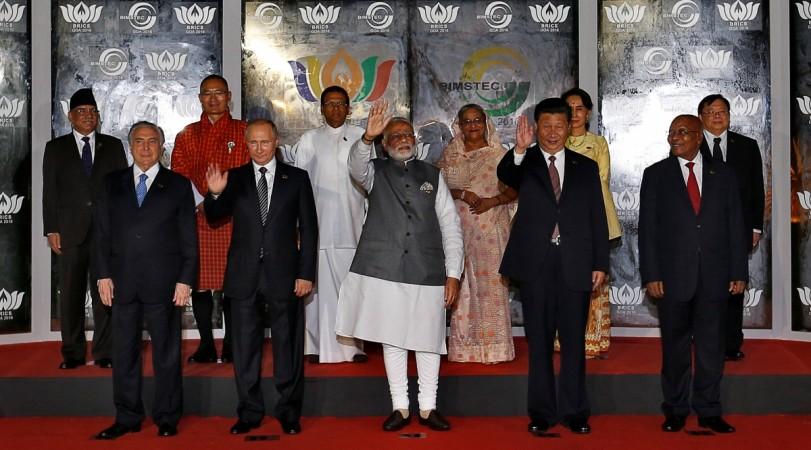While China continues to warn India over the ongoing standoff in the Sikkim sector, Prime Minister Narendra Modi is set to meet Chinese President Xi Jinping at the G20 summit in Hamburg in Germany. The meeting will take place when all the BRICS countries will hold talks on the sidelines of the summit.
The upcoming Modi-Jinping meeting holds much significance as it will be held a day after China's state media warned India against "bullying" the small Himalayan countries or Beijing will begin supporting Sikkim's "pro-independence appeals". It may be mentioned here that it was during another NDA prime minister Atal Behari Vajpayee's visit to China in 2003 when the latter had recognised Sikkim as a part of India in return to the latter's recognising Tibet as a part of China.
Now, in the era of Prime Minister Narendra Modi, things have started looking ominous in India-China relations. And this is likely to have an impact on the multi-lateral platform like the BRICS apart from the bilateral relations between the two Asian neighbours.
With two prime members at loggerheads, how much can BRICS succeed?
One suspects how much successful can BRICS be when two of its members are at constant loggerheads? In the 2016 BRICS summit held in Goa in October, India had tried hard to gather support to isolate Pakistan in the wake of the attacks in an army camp in Uri which killed several jawans. Modi had called Pakistan a "mothership of terrorism" but China said it was against linking any country with terrorism and instead appealed to the world community to acknowledge Pakistan's "great sacrifices".
One suspects the upcoming talks will also be hijacked by the concerns between two big members of the BRICS while the bigger goals will remain sidelined. There is every possibility of the BRICS meeting the fate of the SAARC -- the South Asian Association for Regional Cooperation – which has remained crippled because of the endless squabble between India and Pakistan, two of its biggest members.

The BRICS was founded to give shape to an alternative world order – political and economic – under the stewardship of promising powers but the reality looks much different. While China and Russia are more leftist and anti-West, Brazil and South Africa prefer to work within the ambits set by the western institutions while India occupies a more centrist position. One scholar has suggested to change the acronym to CRIBS instead to truly reflect the member nations' different world views.
And even more than their world views, the gloomy relation between India and China and also the not-like-it-was terms between India and Russia, the emergence of platforms like the Shanghai Economic Cooperation and world-beating ideas like One Belt One Road and the lesser clouts of Brazil and South Africa mean the BRICS has more reasons to struggle than flourish.
As of now, all eyes will be on Modi-Jinping talks and how the border imbroglio is addressed. But as far as BRICS's future is concerned, things don't look promising.
















